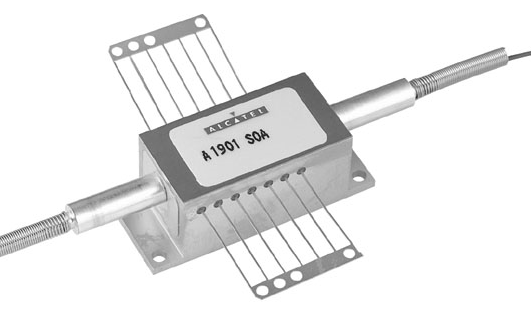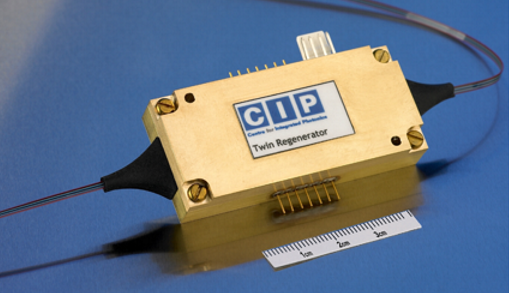semiconductor optical amplifier (SOA)
A semiconductor optical amplifier( SOA) is a semiconductor-based optical amplifier. The active component, which consists of the semiconductor materials indium, gallium and arsenide, can be used in the transmission-relevant wavelength ranges of 1,300 nm and 1,550 nm with appropriate doping.
The purely optical SOA amplifier is electrically pumped by an injected current and uses the nonlinear effects of cross- amplification modulation(XGM); newer methods work with interferrometric arrays. In terms of structure, a semiconductor optical amplifier (SOA) consists of a central, approximately 600 µm long active zone and two approximately 100 µm long passive zones on the input and output sides. The active zone lies on a heterogeneous structure and consists of a 0.2 µm thick stretchable active layer sandwiched between two 0.1 µm thick layers. This active layer tapers to allow optical coupling to the underlying passive waveguide.
SOAs achieve gain factors of up to 30 dB at bandwidths from 2 GHz to 10 GHz and output powers of 12 dBm. The optical bandwidth is 40 nm.
The semiconductor optical amplifiers are suitable for integration into optical time-division multiplexing( OTDM) components such as optical add/drop multiplexers( OADM), optical crossconnects( OXC), wavelength converters or optical switches. The technology used in SOAs is the key technology for other optical components, such as the wavelength converter, regenerator, optical filters, preamplifiers, inline amplifiers and power amplifiers.


